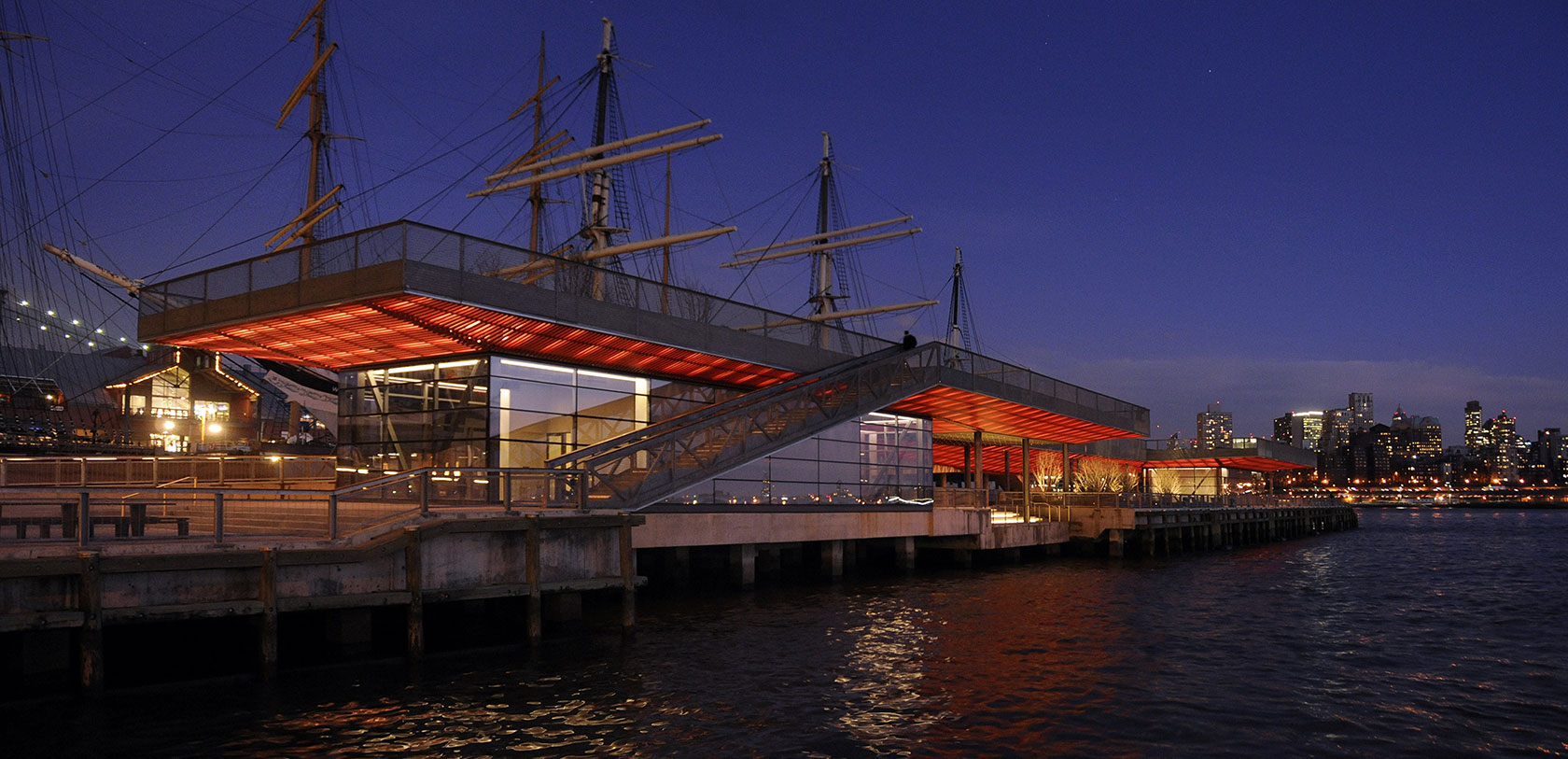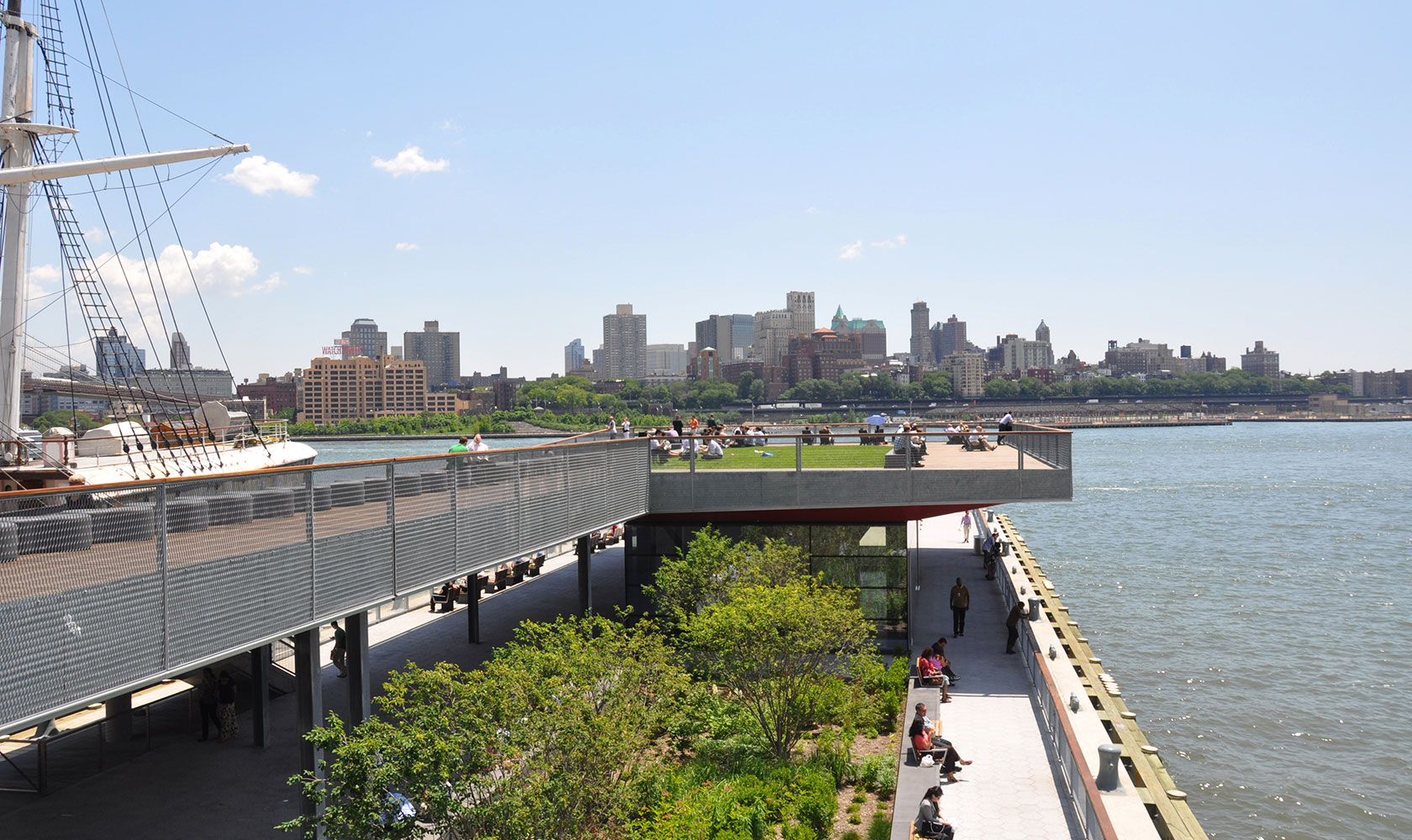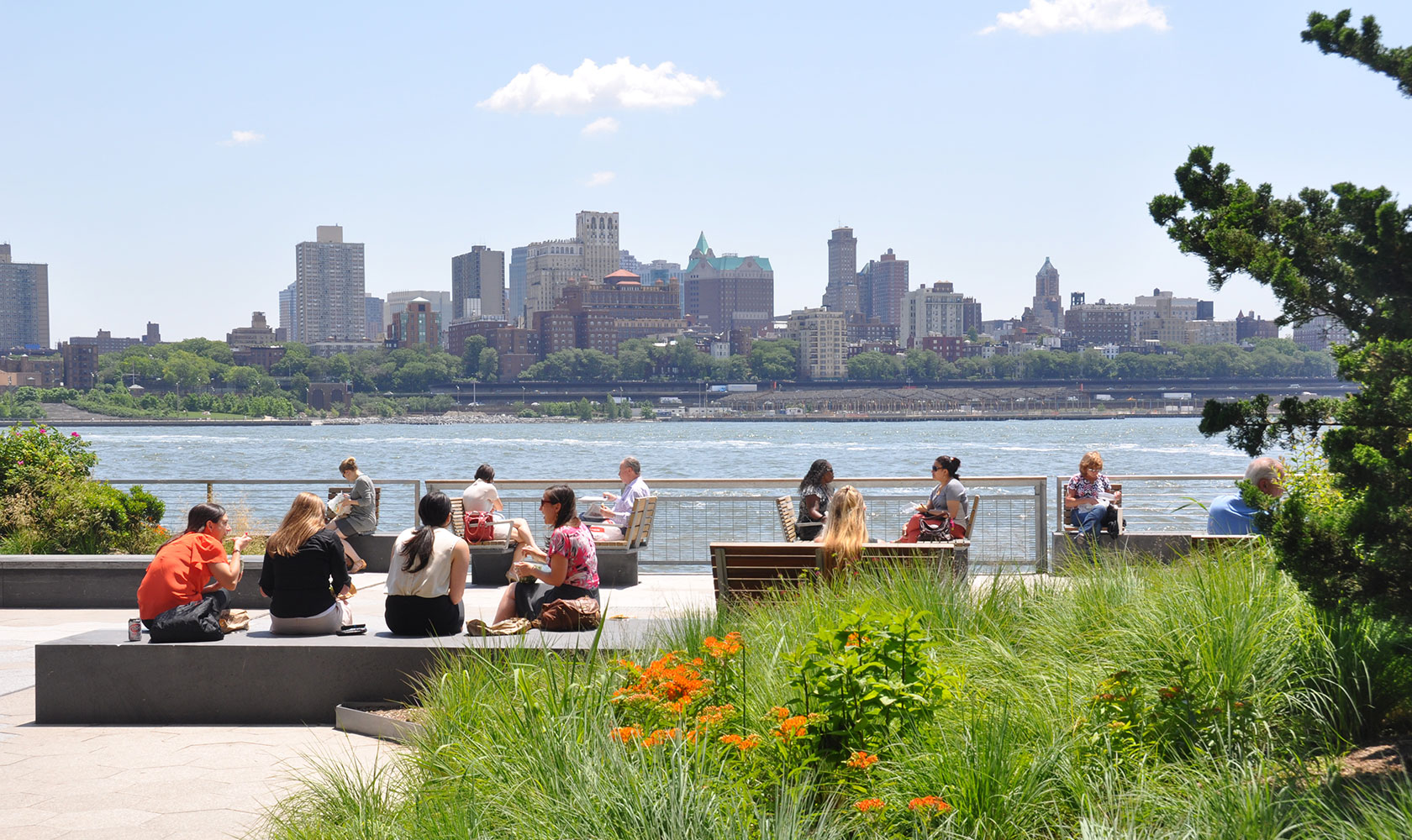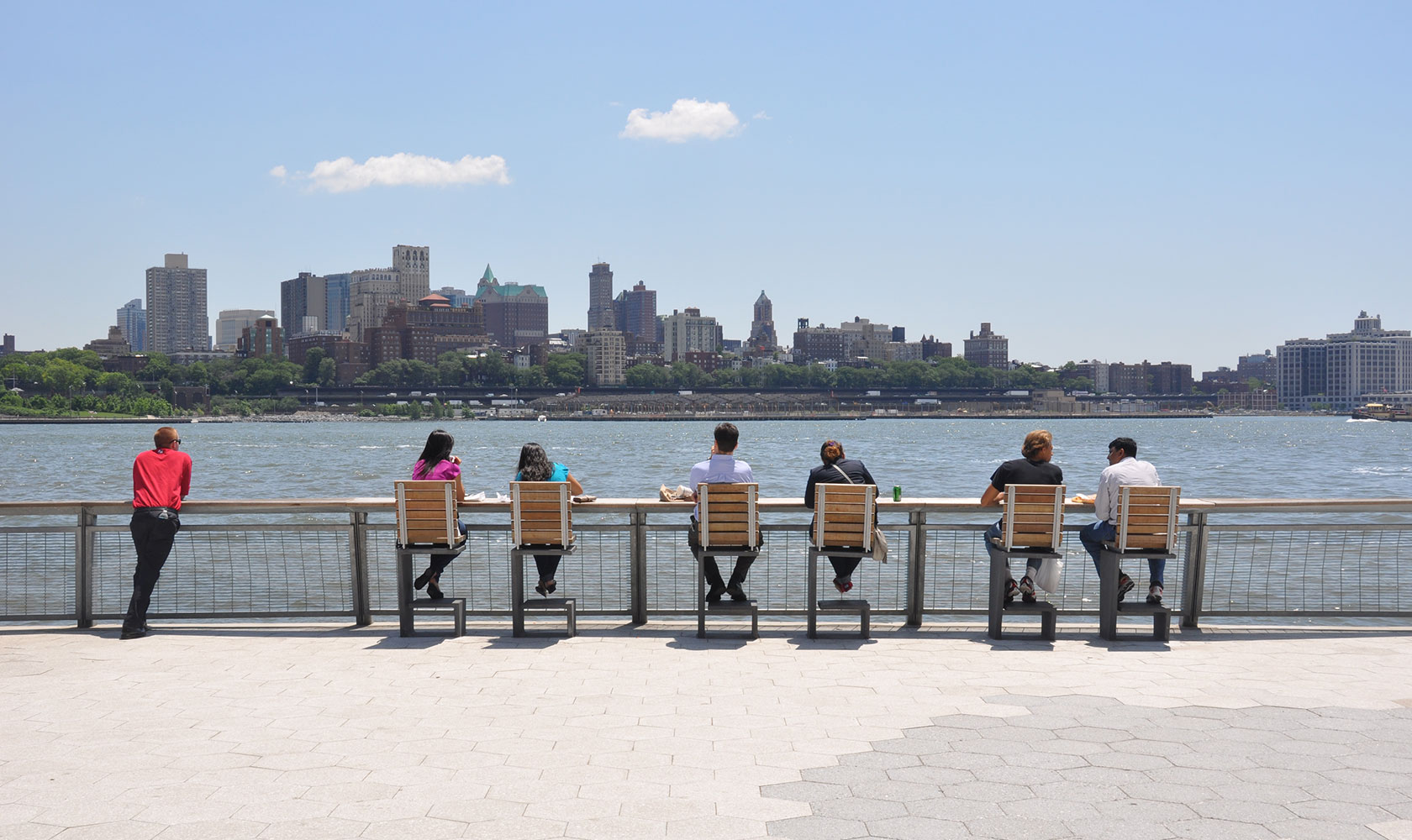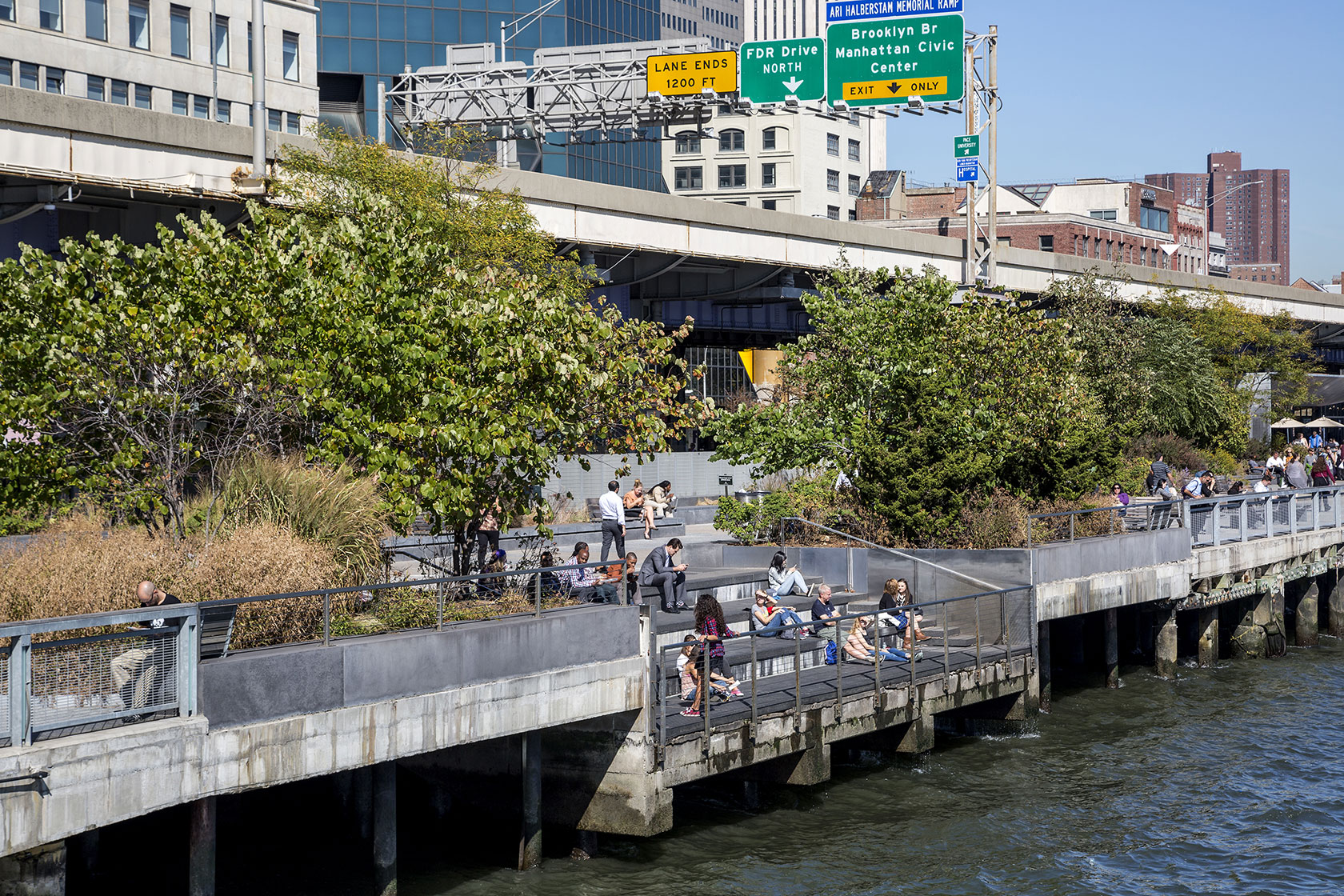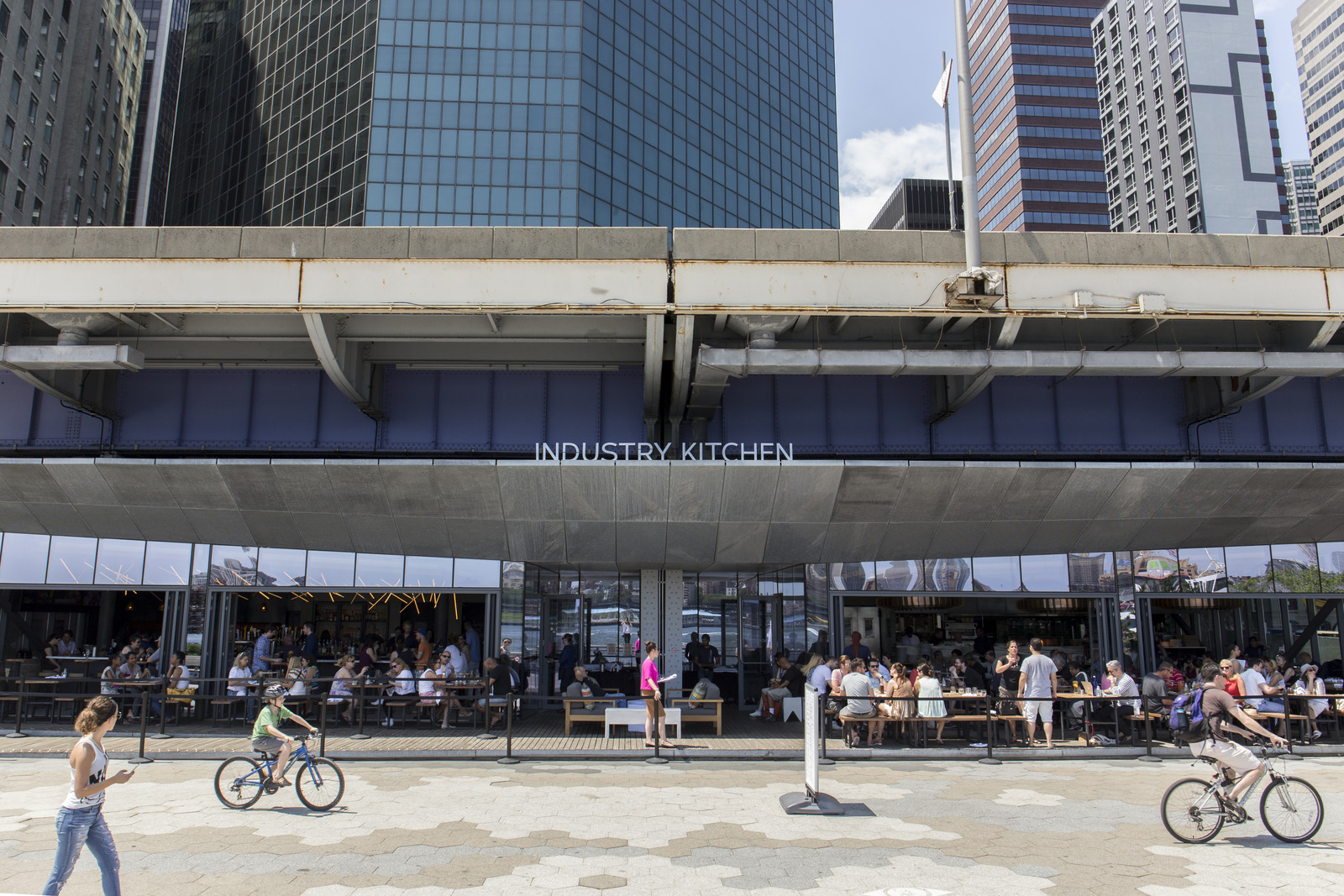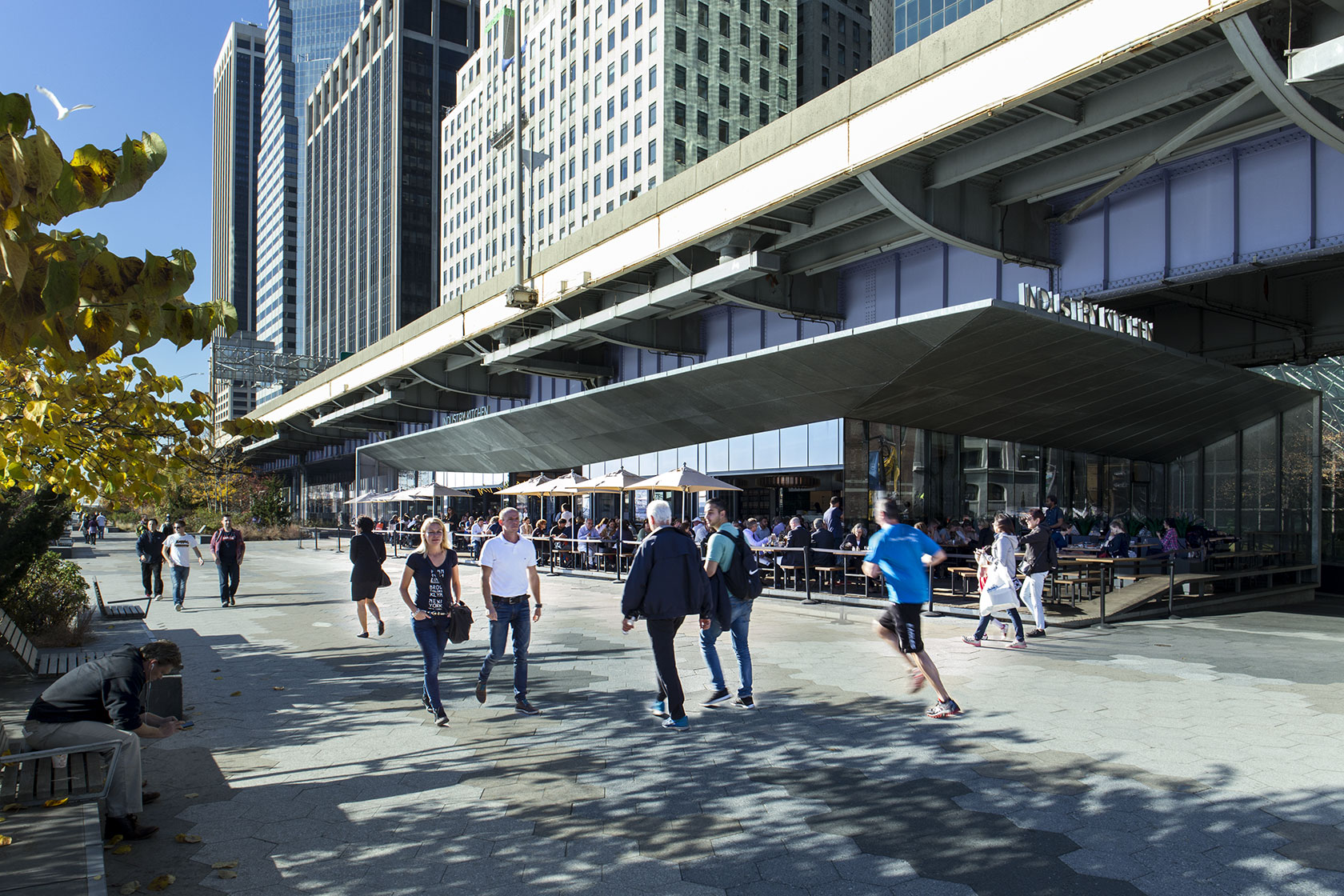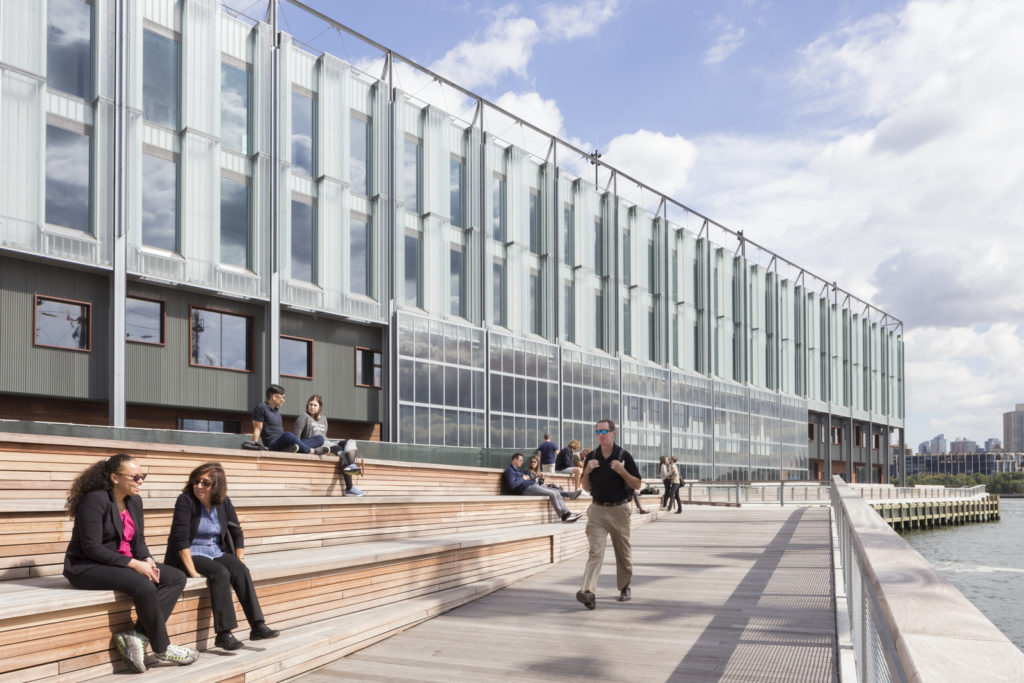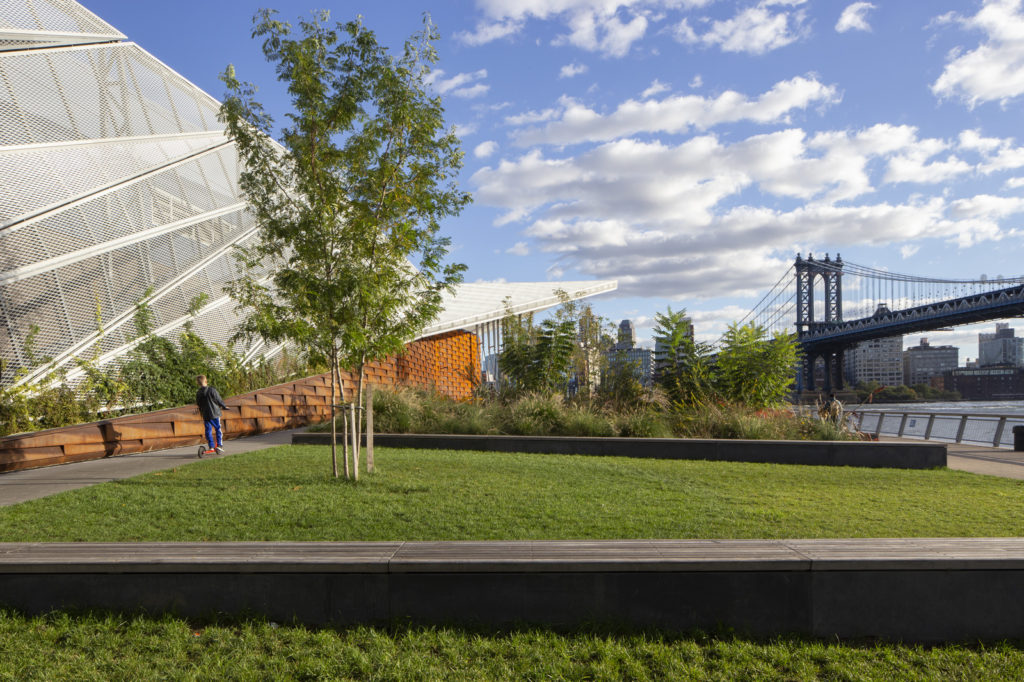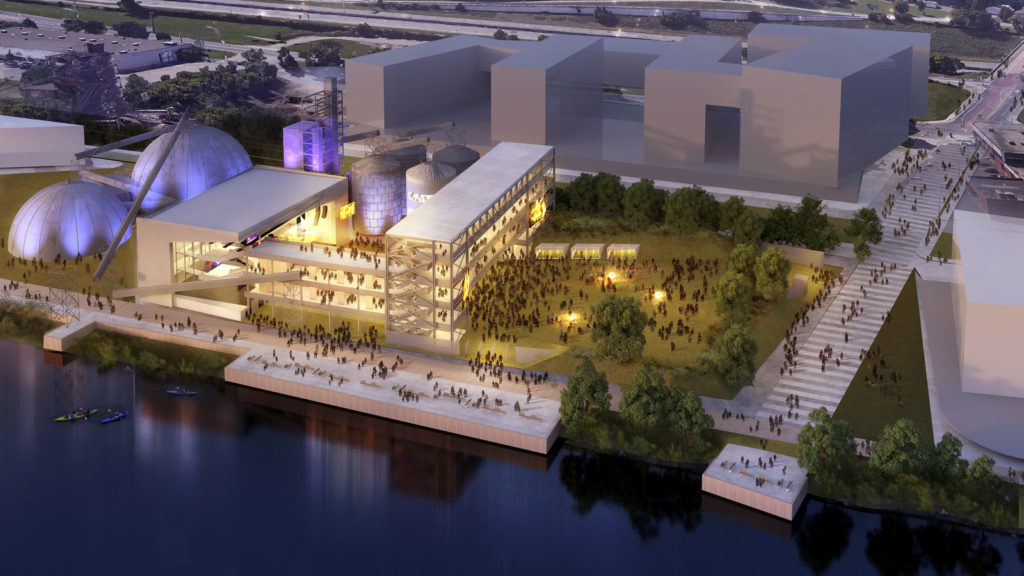Our master plan for the East River Waterfront transformed a forgotten post-industrial shoreline into a truly urban park.
Since 2004, we have designed and delivered a suite of related projects that together serve to reclaim and reinvigorate a long-neglected stretch of Lower Manhattan riverfront. Extending from the Financial District through the historic South Street Seaport to the historically underserved neighborhoods of the Lower East Side, our work on the East River includes new parks, several active-use recreation piers, neighborhood services such as play areas and dog runs, integrated bikeways, and designated structures for retail, dining, and entertainment at every scale. Throughout the project, from the master plan to the smallest architectural detail, we have engaged closely and concertedly with a vast range of community groups, stakeholders, and government entities. The result is a robust new civic amenity, embraced and enjoyed by visitors and residents alike.


